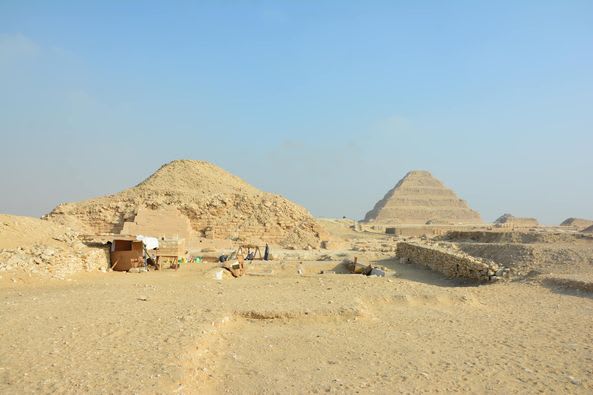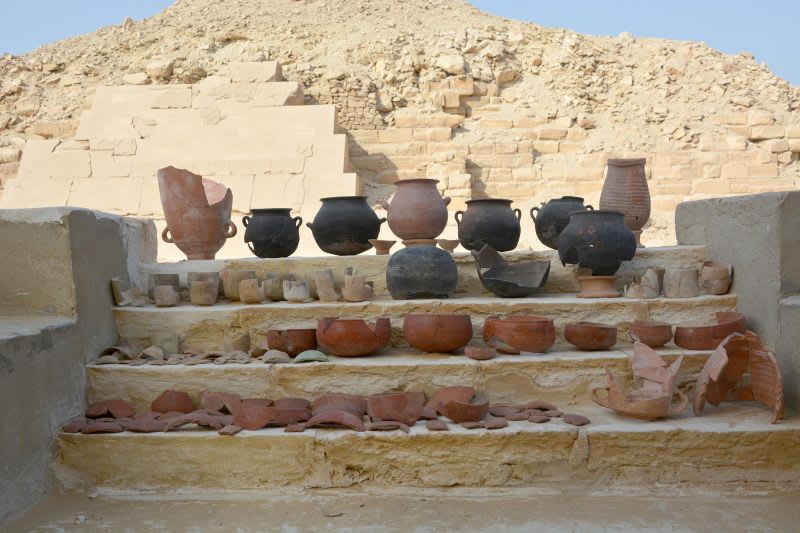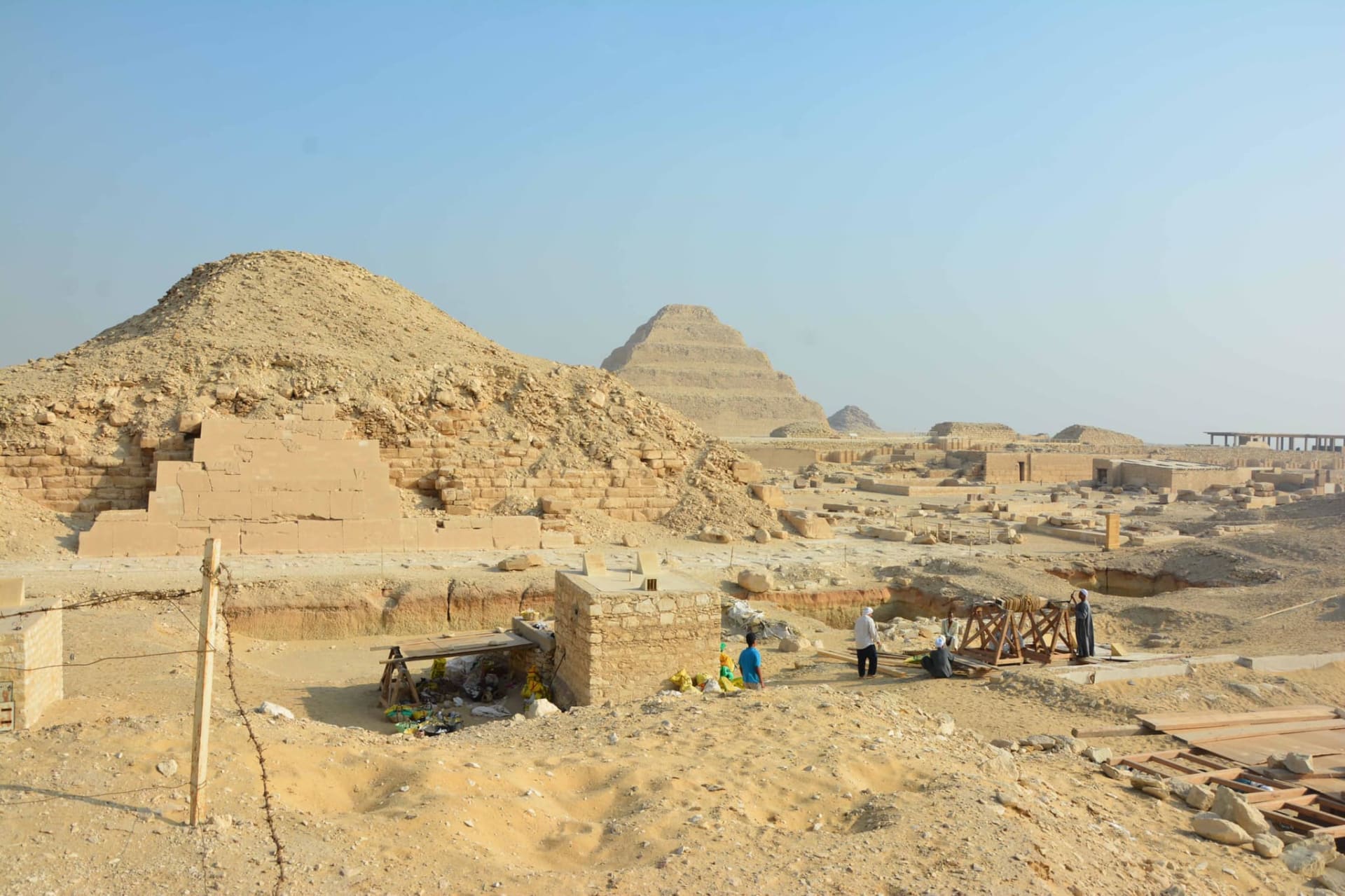دبي، الإمارات العربية المتحدة (CNN) -- أعلنت وزارة السياحة والآثار المصرية التوصّل إلى بعضٍ من أسرار عملية التحنيط عند المصري القديم والمواد المستخدمة فيها، وذلك من خلال تحليل البقايا العضوية التي عُثر عليها في الأواني الفخارية المكتشفة بمنطقة سقارة في محافظة الجيزة، عام 2018.
وفي بيان نشرته الوزارة على صفحتها الرسمية على "فيسبوك"، صرّح مصطفى وزيري، الأمين العام للمجلس الأعلى للآثار في مصر، أنّ "فريق عمل مؤلف من باحثين من جامعتي لودفيغ ماكسيميليان وتوبينغن بألمانيا، نجحوا بالتعاون مع المركز القومي للبحوث في القاهرة، بالتوصل إلى بعض من أسرار عملية التحنيط عند المصري القديم والمواد المستخدمة لذلك".

وأوضح أنّ فريق العمل "أجرى تحليلًا للبقايا العضوية التي عُثر عليها داخل الأواني الفخارية المكتشفة في ورشة التحنيط التي اكتشفتها البعثة الأثرية المصرية الألمانية، بسقارة عام 2018، وذلك ضمن مشروع مقابر العصر الصاوي".
وأشار وزيري إلى أن نتائج هذه الأبحاث نُشرت في الأول من فبراير/ شباط 2023، بمجلة Nature العلمية.

وعثرت البعثة خلال أعمالها على أسماء البقايا العضوية المستخدمة خلال عملية التحنيط مكتوبة باللغة المصرية القديمة على سطح الأواني الفخارية، إضافة إلى أسماء الأعضاء وأجزاء جسد المتوفي التي استُخدمت فيها تلك المواد العضوية أثناء مراحل عملية التحنيط، بحسب وزيري.
وتابع وزيري أنّ "فريق العمل المؤلف من اختصاصيين وباحثين قام بدراسة وتحليل البقايا العضوية الموجودة في الأواني المكتشفة من الورشة، والتوصّل إلى خصائصها الكيمائية، في محاولة للوصول إلى آليات عملية التحنيط وأسرارها في مصر القديمة، وذلك من طريق معرفة المواد التي استخدمها المصري القديم لحفظ الجسد البشري، وتمكّنوا من تحديد كل مادة وفقاً لطبيعة الجزء المستهدف من الجسد".
ولفت أنه "لأول مرة تجتمع ثلاث معلومات مهمة عن عملية التحنيط في مكان واحد، وهي المادة المستخدمة نفسها، واسمها باللغة المصرية القديمة، ومكان استخدامها، الأمر الذي جعل معرفة طبيعية المادة أمراً مهما للغاية".

وأكد وزيري على أهمية هذا الكشف، الذي يساهم بشكل كبير في إعادة قراءة النصوص المألوفة عن التحنيط المصري القديم، حيث تمكّن الفريق وللمرة الأولى بعد مقارنة المواد مع ما هو مكتوب على الأواني من تحديد المادة المناسبة لتحنيط جزء معين من الجسم بدقة.
وتوصلت الأبحاث والدراسات إلى أن "عددًا من المواد المستخدمة في عملية التحنيط تم إستيرادها من الخارج، مثل منطقة البحر المتوسط، والغابات الاستوائية المطيرة، وجنوب شرق آسيا، الأمر الذي يشير إلى وجود صلات وتواصل بين تلك المناطق في تلك الفترة المبكرة".
ومن جانبها، قالت سوزانا بيك، نائب رئيس البعثة، إن "الأبحاث أظهرت أنّ الأواني التي استخدمت في عمليات التحنيط كان مكتوب عليها أسماء المواد التي كانت تحويها، وكذلك كيفية استخدامها مما ساهم بشكل كبير في معرفة أسماء الكثير من مكوّنات التحنيط".

وأشارت بيك إلى أنّ "تحليل البقايا التي عثر عليها في الأواني تم عزلها جزئياً لتحديد مكوناتها الكيميائية، على سبيل المثال مادة "عنتيو" التي استخدمت وجاء ذكرها بكثرة في وصف عمليات التحنيط، كانت تترجم على أنّها مادة الصمغ العطري، إلا أنّ نتائج الدراسة الحديثة أوضحت أنّها عبارة عن خليط من زيت خشب الأرز وزيت العرعر (السرو) ودهون حيوانية".
وأجريت الدراسة من طريق استخدام تقنية كروماتوغرافيا الغاز، وقياس الطيف الكتلي للمواد المكتشفة، وفق ما ذكرته بيك.
